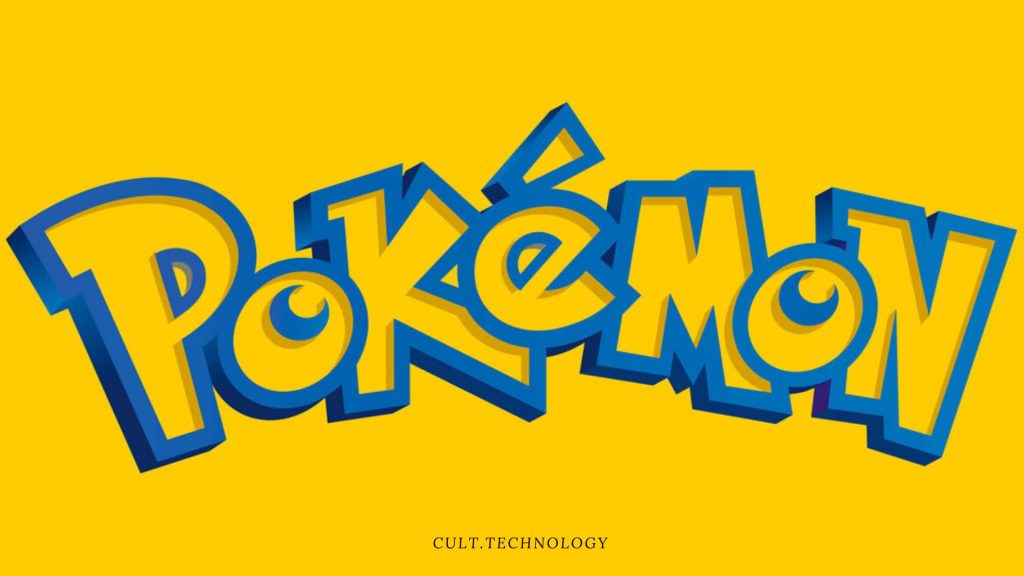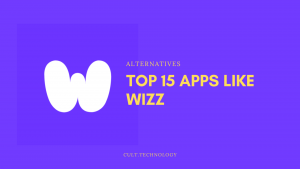Pokémon is a media franchise owned by Japanese video game company Nintendo and created by Satoshi Tajiri in 1996. The franchise centers on fictional creatures called “Pokémon“, which humans, known as Trainers, catch and train to battle each other for sport.
The franchise began as a pair of video games for the original Game Boy, developed by Game Freak and published by Nintendo.
The first titles were Pocket Monsters Red and Green (released as Pokémon Red and Blue in North America), with the later releases of Gold and Silver being the first installments in the second generation of the series.
The success of the games led to an anime television series, Pikachu Shorts, spin-off books, merchandise, and a trading card game.
The franchise has since branched out into other forms of media, including several anime series, a live-action film, an anime film, and a television series. Pokémon is the second best-selling video game franchise of all time behind only Nintendo’s Mario franchise.

What is so Good About Pokémon?
Pokémon has become an icon of Japanese culture, loved by both young and old alike. It all started with the release of Pokémon Red and Blue in 1996, which revolutionized the gaming industry as it was one of the first games to incorporate trading and battling mechanics between players. Since then, Pokémon has released over 20 games and spawned cartoons, movies, manga, and card games.
Key Features of Pokemon
The key features that make Pokémon so popular are its
- Unique Creatures
- Expansive Universe
- Easy to learn Mechanics and
- Replayability.
Each game includes hundreds of different monsters to catch and battle with, each with their own stats and moves. Every new release introduces new monsters and updates the mechanics to keep things interesting. The expansive universe offers a huge world to explore, with different regions and cities filled with interesting characters, stories, and secrets. Finally, the easy to learn mechanics make it accessible for all ages, giving players of any skill level the chance to enjoy it.
All these features combine to create an enjoyable experience that keeps fans coming back for more. With each new game comes new monsters, mechanics, and stories to explore – giving players the chance to discover something new every time. This is why Pokémon has become such a beloved franchise around the world. Its captivating universe and addicting gameplay make it an evergreen source of entertainment.
The Enduring Legacy of Pokémon
It’s no wonder that people have been enjoying Pokémon for over two decades. With its captivating universe, creatures, and mechanics, it is a timeless classic that will remain popular for years to come. The complete list of 23 Pokemon games in chronological order showcases the evolution of the franchise throughout its history:
- Pokémon Red and Blue (1996)
- Pokémon Yellow (1998)
- Pokémon Gold and Silver (1999)
- Pokémon Crystal (2000)
- Pokémon Ruby and Sapphire (2002)
- Pokémon FireRed and LeafGreen (2004)
- Pokémon Emerald (2005 )
- Pokémon Diamond and Pearl(2006 )
- Pokémon Platinum (2008 )
- Pokémon HeartGold and SoulSilver (2009 )
- Pokémon Black and White (2010 )
- Pokémon Black 2 and White 2 (2012 )
- Pokémon X and Y (2013 )
- Pokémon Omega Ruby and Alpha Sapphire (2014 )
- Pokémon Sun and Moon (2016)
- Pokémon Ultra Sun and Ultra Moon (2017 )
- Pokkén Tournament DX(2017 )
- Pokémon Let’s Go, Pikachu! And Let’s Go, Eevee!(2018 )
- Pokémon Sword and Shield(2019 )
- New Pokemon Snap(2021.05.31 & 2021.06.04 JP/EU)
- Pokemon Mystery Dungeon: Rescue Team DX (2020)
- Pokémon Go (2016 )
- Pokémon Home (2020).
The key features that can be seen throughout all these games are the hundreds of creatures to collect, the expansive universes to explore, easy to learn mechanics, and the replayability. These features have kept fans hooked for over two decades and will continue to do so for many more years. There is no doubt that Pokémon has become a beloved classic that will remain popular for generations to come.
Pokémon Games in Order:
The Pokémon series has come a long way since its first game, Pokémon Red and Blue, was released in 1996. Since then, it has grown to become one of the most popular video games around the world. It consists of 23 main titles in order of chronological release:
1. Pokémon Red and Blue (1996):
The original two versions of the game are still beloved by many fans. This classic title was the basis for all subsequent entries in the franchise. Players could explore various regions, battle wild and other trainers’ Pokémon, participate in Gym battles, collect items, and more.
- Developer: Game Freak
- Publisher: Nintendo
- Key Features:
- Introduced the original 151 Pokémon.
- Turn-based combat mechanics.
- Players can collect, trade, and battle Pokémon.
2. Pokémon Yellow (1998):
This version added some new features such as Pikachu following players throughout their journey and allowing them to interact with him.
- Developer: Game Freak
- Publisher: Nintendo
- Key Features:
- Pikachu as a starting Pokémon.
- Inspired by the Pokémon Anime.
- In-game Pikachu reactions and interactions.
3. Pokémon Gold and Silver (1999):
With the release of these two versions, the Johto region was introduced as a secondary location to explore, which made the game even bigger than before. It also added 100 new Pokémon species and other features such as day/night cycles or breeding mechanics.
- Developer: Game Freak
- Publisher: Nintendo
- Key Features:
- Introduced 100 new Pokémon.
- Introduced a real-time day and night cycle.
- New Johto region for exploration.
4. Pokémon Crystal (2000):
This version is an enhanced re-release of Gold and Silver with some added content such as a new story chapter about Suicune, better graphics, and more.
- Developer: Game Freak
- Publisher: Nintendo
- Key Features:
- Introduced animated sprites.
- First mainline Pokémon game to allow players to choose the gender of their character.
- Battle Tower facility was added.
5. Pokémon Ruby and Sapphire (2002):
The Hoenn region was featured in this title along with 135 new Pokémon species added to the roster. Gameplay mechanics included double battles between teams of two trainers, contests to show off their Pokémon’s skills, and other features.
- Developer: Game Freak
- Publisher: Nintendo
- Key Features:
- Introduced the Hoenn region.
- Debut of double battles.
- Introduced Pokémon Abilities and Natures.
6. Pokémon FireRed and LeafGreen (2004):
These two versions are remakes of Red and Blue with updated graphics, enhanced gameplay mechanics, and some minor changes to the story.
- Developer: Game Freak
- Publisher: Nintendo
- Key Features:
- Remakes of the original Pokémon Red and Green games.
- Added the Sevii Islands.
- Wireless linking for battling and trading.
7. Pokémon Emerald (2005):
This version is an enhanced re-release of Ruby and Sapphire that added several new features such as Battle Frontier which players can take part in various tournaments for rewards.
- Developer: Game Freak
- Publisher: Nintendo
- Key Features:
- Enhanced version of Pokémon Ruby and Sapphire.
- Both Team Magma and Team Aqua are the main antagonists.
- Added the Battle Frontier.
8. Pokémon Diamond and Pearl (2006):
The Sinnoh region was featured in these games along with 107 new species of Pokémon. It also introduced a feature called Wi-Fi trading where players can trade over the internet from anywhere in the world.
- Developer: Game Freak
- Publisher: Nintendo
- Key Features:
- Introduced the Sinnoh region.
- Added 107 new Pokémon.
- Wi-Fi connectivity for trading and battling.
9. Pokémon Platinum (2008):
This version is an enhanced re-release of Diamond and Pearl with some added content such as new areas, characters, and items.
- Developer: Game Freak
- Publisher: Nintendo
- Key Features:
- Enhanced version of Diamond and Pearl.
- Expanded storyline featuring Giratina.
- Distortion World was added.
10. Pokémon HeartGold & SoulSilver(2009):
These two versions are remakes of Gold and Silver featuring updated graphics, soundtracks, and other tweaks to the gameplay. It also introduced a new feature where players can have their Pokémon follow them like in Yellow.
- Developer: Game Freak
- Publisher: Nintendo
- Key Features:
- Remakes of Gold and Silver games.
- First Pokémon follow the player around.
- Included a real-life pedometer device, the Pokéwalker.
11. Pokémon Black & White (2010):
The Unova region was featured in these games along with 156 new species of Pokémon. Gameplay mechanics included triple battles between teams of three trainers and combination moves that created more powerful attacks than single ones alone.
- Developer: Game Freak
- Publisher: Nintendo
- Key Features:
- Introduced the Unova region.
- 156 new Pokémon were introduced.
- Seasonal cycle added.
12. Pokémon Black 2 & White 2 (2012):
These two versions are direct sequels to the original Black and White games featuring new areas, characters, Pokémon species, and other features.
- Developer: Game Freak
- Publisher: Nintendo
- Key Features:
- Sequels to Pokémon Black and White.
- Added new areas in the Unova region.
- Introduced the Pokémon World Tournament.
13. Pokémon X & Y (2013):
The Kalos region was featured in these titles along with 72 new species of Pokemon. Game play mechanics included Mega Evolution which allowed players to temporarily evolve their Pokemon into a more powerful form.
- Developer: Game Freak
- Publisher: Nintendo
- Key Features:
- Introduced the Kalos region.
- First fully 3D Pokémon game.
- Introduced Mega Evolutions.
14. Pokémon Omega Ruby & Alpha Sapphire (2014):
These two versions are remakes of Ruby and Sapphire with updated graphics, soundtracks, and some added content such as special forms of certain legendary Pokémon.
- Developer: Game Freak
- Publisher: Nintendo
- Key Features:
- Remakes of Ruby and Sapphire games.
- Included Mega Evolutions.
- Added the Primal Reversion mechanic.
15. Pokémon Sun & Moon(2016):
The Alola region was featured in these titles along with 81 new species of Pokemon. Game play mechanics included Z-Moves which allowed players to execute powerful attacks by combining their Pokemon’s move with a special item and their trainer’s own strength.
- Developer: Game Freak
- Publisher: Nintendo
- Key Features:
- Introduced the Alola region.
- Replaced traditional gym system with island challenges.
- Introduced Z-Moves.
16. Pokémon Ultra Sun & Ultra Moon (2017):
These two versions are direct sequels to the original Sun and Moon games featuring new areas, characters, stories, Pokémon species, and other features.
- Developer: Game Freak
- Publisher: Nintendo
- Key Features:
- Enhanced versions of Sun and Moon.
- Expanded storyline featuring Necrozma.
- Added new Ultra Beast Pokémon.
17. Pokémon: Let’s Go Eevee & Pikachu! (2018):
This title is a remake of Yellow with updated graphics, soundtracks, and some added content such as Mega Evolutions for certain Kanto region Pokémon. It also introduced the Poké Ball Plus accessory which allows players to control the game by shaking the device.
- Developer: Game Freak
- Publisher: Nintendo
- Key Features:
- Remakes of Pokémon Yellow.
- Integration with Pokémon GO.
- Introduced simplified gameplay mechanics for newcomers.
18. Pokémon Sword & Shield (2019):
The Galar region was featured in these titles along with 81 new species of Pokémon. Gameplay mechanics included Dynamaxing which allowed players to temporarily increase the size and strength of their Pokémon for a limited amount of time.
- Developer: Game Freak
- Publisher: Nintendo
- Key Features:
- Introduced the Galar region.
- Introduced Dynamax and Gigantamax forms.
- Introduced the Wild Area, a fully explorable open world area with free camera control.
19. Pokémon Mystery Dungeon: Rescue Team DX (2020):
This title is a remake of Red Rescue Team and Blue Rescue Team with updated graphics, soundtracks, and some added content such as bosses from other Mystery Dungeon titles.
- Developer: Spike Chunsoft
- Publisher: Nintendo
- Key Features:
- Remake of the 2005 games Pokémon Mystery Dungeon: Blue Rescue Team and Red Rescue Team.
- Player and partner are transformed into Pokémon.
- Turn-based strategy gameplay on grid maps.
20. Pokémon Brilliant Diamond & Shining Pearl (2021):
These two versions are remakes of Diamond and Pearl featuring updated graphics, soundtracks, and some added content such as Gigantamaxing which allowed certain Pokémon to take on bigger and more powerful forms.
- Developer: ILCA, Inc.
- Publisher: Nintendo, The Pokémon Company
- Key Features:
- Remakes of the original Diamond and Pearl games.
- Return to the Sinnoh region with reimagined graphics and gameplay mechanics.
- Utilize the underground Sinnoh region for secret base creation and Pokémon catching.
- New Super Contest Shows and the Ramanas Park area.
- Classic Pokémon capturing and battling mechanics with some modern touches, like Pokémon following you outside of their Pokéballs in certain areas.
- Compatible with Pokémon HOME in 2022, allowing for cross-game trading and storing.
21. Pokémon Legends Arceus (2021):
This title is an open-world action RPG set in the Sinnoh region featuring a new type of battle system as well as a story focused on exploring ancient ruins, battling legendary Pokémon, and collecting items from across the land.
- Developer: Game Freak
- Publisher: Nintendo, The Pokémon Company
- Key Features:
- Open-world exploration in the ancient Sinnoh region.
- Real-time combat with a new battle system.
- Uncover the origins and backstory of the Pokémon world.
- Immersive interactions with Pokémon in their natural habitats.
22. Pokémon Snap (2021):
This title is a remake of the classic Rail Shooter game with updated graphics, soundtracks, and some added content such as special missions for players to complete.
- Developer: Bandai Namco Studios
- Publisher: Nintendo
- Key Features:
- Sequel to the 1999 Nintendo 64 game Pokémon Snap.
- Gameplay revolves around taking pictures of Pokémon in their natural habitats.
- Various routes and “research levels” that change Pokémon behaviors.
23. Pokémon Unite(2021):
This upcoming title is a team-based strategy game where players will battle alongside their teammates using different tactics and strategies while controlling their own Pokémon on a battlefield. The game will be free to play and available across multiple platforms.
- Developer: TiMi Studios (a subsidiary of Tencent Games)
- Publisher: The Pokémon Company
- Key Features:
- Multiplayer online battle arena (MOBA) game featuring Pokémon.
- Team-based battles where players control Pokémon and work together to defeat opponents.
- Strategic gameplay with various Pokémon roles, abilities, and moves.
- Real-time battles in arenas with the objective of scoring points by capturing wild Pokémon and defeating enemy Pokémon.
- Evolution of Pokémon during battles, unlocking new moves and abilities.
- Cooperative gameplay with friends or competitive matches against other players.
- Free-to-play with optional in-game purchases.
- Planned release on Nintendo Switch and mobile devices.
How do I play Pokémon?
Pokémon is one of the most popular games in the world, and it can be played on a variety of devices. It is available for Nintendo 3DS and 2DS systems, as well as iOS and Android smartphones and tablets. The game can also be accessed through the Pokémon Trainer Club website.
The main game is a paid version, however there are plenty of free-to-play options such as the Pokémon Masters EX app and Pokémon HOME mobile app. These apps provide rewards that help players progress in the game but do not include all aspects of the full version. Additionally, certain online events may offer free items or bonuses to those who participate.
No matter which device you use to play Pokemon, you’re sure to have a great experience! There is something for everyone, from the casual player who likes to relax and explore the world, to the more competitive types who love battling. So why not grab your device and dive into the world of Pokémon today? With so many options, you’re sure to find something that fits your needs. Enjoy!
Can I Play Pokémon on a Windows laptop?
Yes, you can! Pokémon games are available for Windows computers through the Windows Store and the new Nintendo Switch Online app.
This app currently has multiple versions of the popular Pokémon game series available to download and play. You can also access a variety of other features that make playing on your computer even more fun.
So, if you’re looking for a way to bring the world of Pokémon into your home, this is definitely an option worth exploring! Good luck with your adventure!
Frequently Asked Questions
What is the correct order to play Pokémon games?
There is no strict order, but starting with the mainline series (e.g., Red/Blue/Green) and progressing through subsequent generations is common.
Do I need to play Pokémon games in order?
No, each game has its own self-contained story, and playing in order is not necessary.
Can I start with the latest Pokémon game?
Yes, starting with the latest game allows you to experience the most up-to-date features and mechanics.
What are remakes and enhanced versions of Pokémon games?
Remakes update previous games, while enhanced versions offer additional features. Examples include FireRed/LeafGreen (remakes) and Ultra Sun/Ultra Moon (enhanced versions).
Are spin-off Pokémon games part of the main series?
No, spin-off games have their own gameplay and storylines, separate from the mainline series.
Conclusion
In conclusion, the Pokémon game series offers a diverse array of experiences, allowing players to embark on exciting adventures in various regions with unique Pokémon to discover. While there is no strict order to play the games, starting with the mainline series and progressing through subsequent generations is a common approach.
However, each game can be enjoyed independently, with its own self-contained story and features. Whether you choose to play the latest installment or explore the remakes and enhanced versions, the Pokémon games offer endless hours of fun and exploration.
Additionally, spin-off games provide alternative gameplay experiences within the Pokémon universe. Ultimately, the choice of which Pokémon game to play and in what order is up to personal preference. So, grab your Poké Balls and embark on a thrilling journey to become a Pokémon Trainer!



